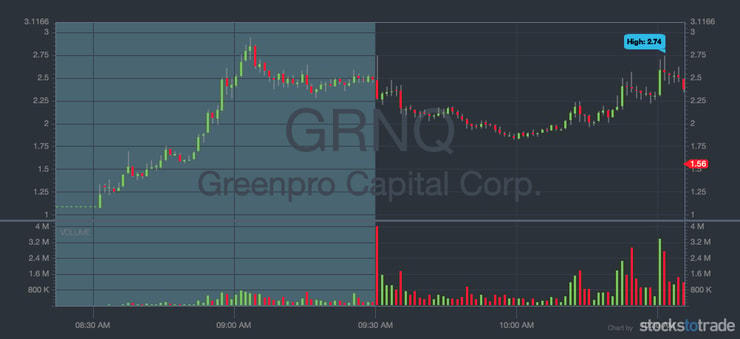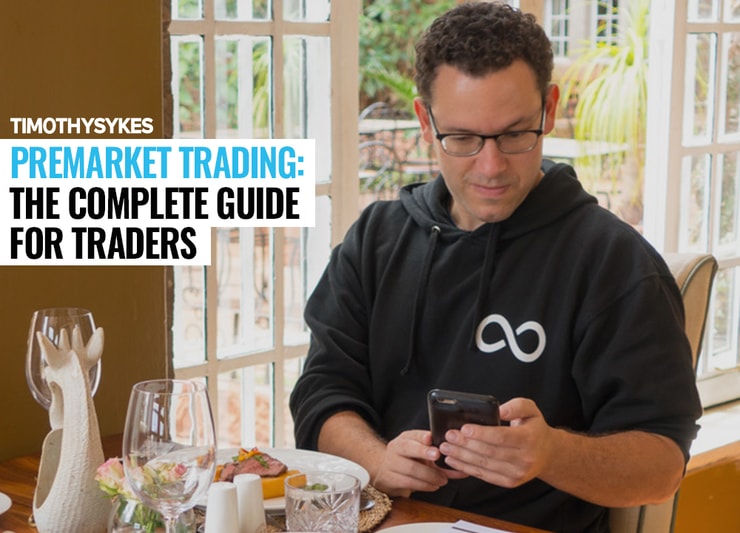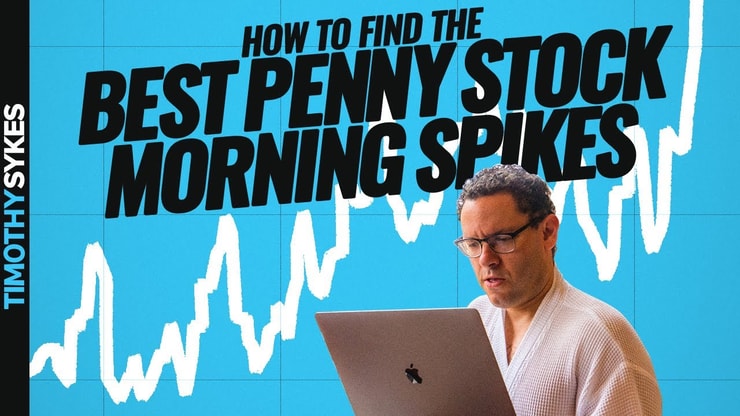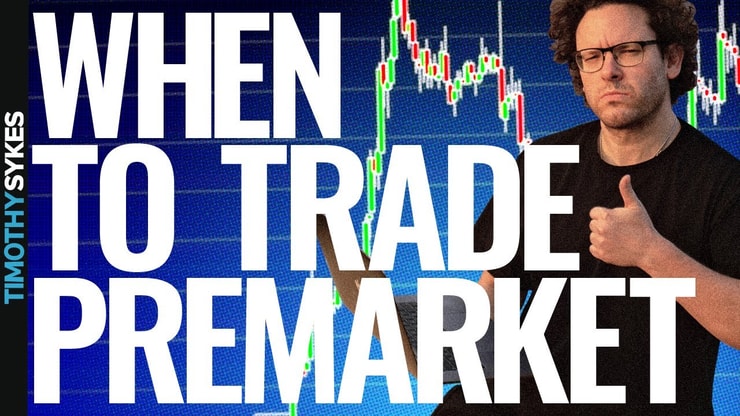Premarket Trading: Key Takeaways
- Why I almost never trade premarket — and why I don’t think you should either…
- What you should be doing instead of trading in the early morning…
- How I traded the exception that proves the rule for a decent premarket win*…
See How The Last 60 Seconds Before The Market Open Can Change The Way You Trade
The early bird gets the worm … By that logic, premarket trading is where you’ll find the best opportunities, right?
Not quite. Premarket trading is risky. But that doesn’t mean you can’t make the most out of every premarket session.
Let’s do a deep dive into premarket trading and the smartest thing you can do before the open.
Table of Contents
What Is Premarket Trading?

2025 Millionaire Media, LLCPremarket trading happens before the regular market session opens at 9:30 a.m. Eastern.
Premarket trading sessions go from 4–9:30 a.m. on the major exchanges. But that doesn’t necessarily mean you can execute during these hours.
Who Can Trade in Premarket?
Premarket trading is more common for bigger investors…
But individual traders like you and me can trade in premarket too.
It doesn’t work exactly the same as trading during regular market hours. There are a few things to keep in mind…
How Can You Buy in Premarket?
Many brokers count premarket trading among their offerings.
But different brokers may have different rules for premarket trading. Before making ANY premarket trade, check your broker’s policies.
Always read the fine print. Some brokerages have special fees or a surcharge during these times. Those fees can add up.
Uses for Premarket Trading
The best use of your time in premarket? Look at what’s moving.
This can provide opportunities beyond picking stocks to trade. These movers can help you gain insight into the overall market.
Say you notice there’s a lot of movement in stocks within a particular industry. This could tip you off to a big catalyst that could spike an entire sector once regular trading begins.
A premarket mover can influence specific picks and tell you a lot about hot sectors and the economy.
Even if you have no desire to trade in the premarket hours, it’s worth your time to see what’s happening before the open.
Risks of Premarket Trading

2025 Millionaire Media, LLCPremarket trading is more complicated than regular market hours.
For one, there can be different limits and fees.
There’s also a higher level of volatility and risk. It’s illiquid. There’s little volume.
Trading during market hours is ideal. That’s when you typically see the most activity and better volume.
Trading Premarket vs. After Hours
It’s not too complicated! These sessions are exactly what they sound like…
Premarket trading happens in the morning hours before the markets open. After-hours trading occurs after the markets close, usually 4–8 p.m.
Is one safer than the other? Not necessarily.
The problem with both of these sessions is the lack of liquidity. With less demand comes wider spreads.
Make the Most of Every Premarket Session
I don’t recommend trading premarket. You can’t cut your losses quickly if you don’t have volume.
Still, the premarket is an important time for traders. That’s when the day’s big movers are building momentum…
If you get lucky you might even see a killer trade develop.
I traded GRNQ off a StocksToTrade’s Breaking News Chat alert **…
I opened a small position at $1.37 and exited the trade at $1.62.
As I often do, I left a LOT of money on the table. But look where it peaked — that was still in premarket.

I always try to sell into strength. That’s doubly important in premarket trading.
I made a quick $1,625.* There was crazy demand. Traders were responsive to news in the sector, thanks to Elon Musk’s similar venture…
What’s more, I’d traded GRNQ before. That same year, I traded the consulting stock for gains of $2,830 and $980.*
That experience gave me a good idea of how all of this volume would spike its price.
It was a risk, but one that worked out for me. And if the trade stalled, I was prepared to get out quickly.
Premarket Trading Techniques

2025 Millionaire Media, LLCSounds exciting right? Not so fast.
Here are some things to pay attention to before you even consider trading in premarket.
Earnings Releases
Earnings season can be a huge catalyst.
Earnings reports often come out before the market open or right after its close. These drops can make for big pre- and post-market moves.
More Breaking News
- SoundHound AI’s Surge: A Deep Dive into Latest Moves
- B2Gold Corp’s Surge: Worth Buying?
- Growth or Bubble? Unveiling ASM’s Stock Mystery
Headline News
This is news that can move the market, big time. And the news doesn’t follow specific hours.
Premarket trading is one way to get your trading edge. But it can be a double-edged sword.
The low volume of premarket can give a false indication of the stock’s value. So you might not get an accurate enough idea of the price.
News has to be REALLY strong to warrant premarket trading.
Watch the Premarket Spread
Mind the spread!
In the premarket, volume and liquidity are limited. This makes the bid-ask spreads bigger than usual…
What’s a bid-ask spread?
That’s the difference between the bid price and the ask price. The spread is based on supply (aka float), demand, and volume.
Demand and volume are limited in premarket. That usually makes the supply more pronounced.
Premarket Trading Tips

2025 Millionaire Media, LLCIf you’re thinking of trying premarket trading, make sure you first learn a ton about the process.
These guidelines have been helpful for my trading … but they’re just that: guidelines.
Understand the Market’s Mood and Trade Appropriately
Listen to the market and trade based on what it’s telling you right now.
After-hours and premarket sessions are mostly made up of professionals. For individual traders, it’s not the most welcoming place.
Low volume and high volatility abound. It can be extremely difficult to determine entry and exit points.
One big buy could have a major impact on the stock’s price … and leave you regretting making a trade outside of regular market hours.
Wait for Regular Market Hours
Liquidity issues, bigger spreads, fewer players in the game … If premarket trading is a party, you can see why people don’t show up.
For many, there’s not much of a benefit to trading in the premarket hours.
Think About Sympathy Sell-Offs
Sympathy sell-offs happen in response to industry events or news.
For instance, one stock might have a reduced price because of a bad news catalyst. That could cause the stocks of its competitors to go down as well … just by association.
Premarket Charting
Charts are one of the most important parts of trading. And the premarket is an ideal time to study them…
You’ll need a sturdy trading platform. StocksToTrade is what I use to catch the biggest premarket gainers.**
You’re scanning for the big premarket movers.
Next, filter by volume. You want to focus on stocks on track to trade a significant portion of their float…
Watching stock charts evolve every day will train you to see breakouts in advance.
Look for Forced Liquidations on Margin Calls
Brokers often adjust a stock’s margin requirements based on its volatility.
This can land traders in potentially bad positions when the market opens. If you’re overleveraged and the margin changes, you might be forced to exit the trade.
Watch for Stock Halts
A trading halt is a temporary halt on trading.
Trading halts happen for a few reasons. These can include news announcements, regulatory issues, or order imbalances. If a trading halt occurs, orders could be canceled.
Because of this, it’s always important to check if a stock is emerging from a halt. It’s worth the small amount of time required to find out if there’s a halt, especially if the news or catalyst isn’t strong.
Trading Challenge
What’s the best way to avoid making mistakes in the premarket and any market? Prepare.
There’s a lot you can’t prepare for in the market. Education is one thing you can control.
I created my Trading Challenge to share the things I’ve learned in the past two decades in the stock market. It’s filled with everything I wish someone had taught me…
It comes with access to thousands of videos, webinars, and live trading webcasts … and I publicly post every trade I make.*
My goal is to teach you how to navigate the market so you can become a self-sufficient trader. That’s how you can learn to adapt to any kind of market.
Apply for my Trading Challenge today!
Should You Consider Premarket Trading?

2025 Millionaire Media, LLCPremarket trading can create opportunities, but it comes with significant risk. It’s not great for new traders. I’ve been trading for 20+ years, and I rarely trade premarket.
That doesn’t mean you should ignore it…
Premarket is the time when you build your trading plans. When the market opens, you’re ready to rock.
What do you think? How do you keep track of premarket activity? Let me know in the comments!
Disclaimers
*Results are not typical and will vary from person to person. Making money trading stocks takes time, dedication, and hard work. Most who receive free or paid content will make little or no money because they will not apply the skills being taught. Any results displayed are exceptional. We do not guarantee any outcome regarding your earnings or income as the factors that impact such results are numerous and uncontrollable.
**Tim Sykes has a minority ownership stake in StocksToTrade.com.













Leave a reply